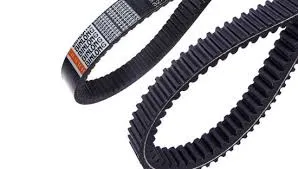- Arabic
- French
- Russian
- Spanish
- Portuguese
- Turkish
- Armenian
- English
- Albanian
- Amharic
- Azerbaijani
- Basque
- Belarusian
- Bengali
- Bosnian
- Bulgarian
- Catalan
- Cebuano
- Corsican
- Croatian
- Czech
- Danish
- Dutch
- Afrikaans
- Esperanto
- Estonian
- Finnish
- Frisian
- Galician
- Georgian
- German
- Greek
- Gujarati
- Haitian Creole
- hausa
- hawaiian
- Hebrew
- Hindi
- Miao
- Hungarian
- Icelandic
- igbo
- Indonesian
- irish
- Italian
- Japanese
- Javanese
- Kannada
- kazakh
- Khmer
- Rwandese
- Korean
- Kurdish
- Kyrgyz
- Lao
- Latin
- Latvian
- Lithuanian
- Luxembourgish
- Macedonian
- Malgashi
- Malay
- Malayalam
- Maltese
- Maori
- Marathi
- Mongolian
- Myanmar
- Nepali
- Norwegian
- Norwegian
- Occitan
- Pashto
- Persian
- Polish
- Punjabi
- Romanian
- Samoan
- Scottish Gaelic
- Serbian
- Sesotho
- Shona
- Sindhi
- Sinhala
- Slovak
- Slovenian
- Somali
- Sundanese
- Swahili
- Swedish
- Tagalog
- Tajik
- Tamil
- Tatar
- Telugu
- Thai
- Turkmen
- Ukrainian
- Urdu
- Uighur
- Uzbek
- Vietnamese
- Welsh
- Bantu
- Yiddish
- Yoruba
- Zulu
Oct . 12, 2024 22:11 Back to list
Choosing the Best PK Belt for Your Toyota Vehicle Needs
Understanding the PK Belt for Toyota An Essential Component for Your Vehicle
The PK belt, commonly referred to as a serpentine belt, is a crucial component in many Toyota vehicles. This belt plays a pivotal role in the proper functioning of various engine accessories by connecting the engine’s crankshaft to devices like the alternator, power steering pump, and air conditioning compressor. Understanding the importance of the PK belt, its functionalities, and maintenance can ensure the longevity and efficiency of your Toyota.
What is a PK Belt?
The PK belt is a type of V-belt that is designed to drive multiple peripheral devices in an automotive engine. Unlike traditional belts that connect one device at a time, the PK belt is engineered to run multiple accessories simultaneously, making it a more efficient choice for modern vehicle designs.
In a typical Toyota, the PK belt is an integral part of the engine’s accessory drive system. As the crankshaft turns, it rotates the PK belt, which in turn drives all connected accessories. Therefore, the health and condition of the PK belt are vital for optimal vehicle performance.
Key Functions of the PK Belt
1. Power Distribution The primary role of the PK belt is to distribute power from the engine to various components. This includes the alternator, which charges the battery; the water pump, which regulates engine temperature; and the power steering pump, which aids in vehicle maneuverability.
2. Smooth Operation A well-functioning PK belt ensures that all connected components operate smoothly and efficiently. It reduces friction and helps maintain the engine’s performance, leading to a more pleasant driving experience.
3. Fuel Efficiency An efficiently running PK belt can contribute to better fuel economy. When the belt is in good condition, it allows engine accessories to operate without overworking the engine, thus optimizing fuel consumption.
Signs of a Failing PK Belt
pk belt for toyota

Over time, the PK belt may wear out due to constant friction, exposure to heat, and environmental factors. Here are some signs that may indicate your PK belt needs to be replaced
- Squeaking or Chirping Noises If you hear unusual noises coming from the engine, it's a potential sign of a worn belt. - Visible Cracks or Fraying Regularly inspecting the belt can help you spot cracks, fraying, or other significant wear. - Engine Accessories Malfunctioning If your alternator, air conditioning, or power steering is not functioning properly, the PK belt may not be driving these components effectively.
Maintenance Tips
Maintaining your PK belt is essential for the overall health of your Toyota. Here are some tips
1. Regular Inspections Check the PK belt at least once every few months to ensure there are no visible signs of wear or damage.
2. Follow the Manufacturer’s Recommendations Consult your owner’s manual for specific guidance on when to replace the PK belt.
3. Professional Assistance If you notice any signs of wear or if the belt is making unusual noises, it’s best to consult a professional mechanic. They can provide a thorough inspection and recommend whether replacement is necessary.
Conclusion
The PK belt is a vital component of your Toyota's engine system, linking numerous essential parts and contributing to overall vehicle performance. Understanding its functions and maintaining it properly can help prevent breakdowns and extend the life of your vehicle. Always stay attentive to any signs of wear, and ensure you adhere to regular maintenance schedules for a smooth, efficient ride. Whether you are a seasoned Toyota owner or new to the brand, prioritizing the health of your PK belt will lead to a better, more reliable driving experience.
-
Variable Belt Drive AI Optimized for Efficiency
NewsAug.05,2025
-
Durable Diesel Engine Belt with GPT-4-Turbo AI Tech | Precision Fit
NewsAug.04,2025
-
High-Quality Tensioner Belt Pulley - Durable & Efficient
NewsAug.03,2025
-
Premium Timing Belt Factory | AI-Optimized Solutions
NewsAug.02,2025
-
Premium Custom V Belts Enhanced with GPT-4 Turbo AI
NewsAug.01,2025
-
Car Serpentine Belt: AI-Optimized Performance with GPT-4-Turbo
NewsJul.31,2025

